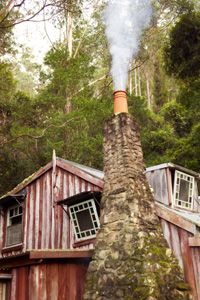How to Troubleshoot an Oil Furnace
Oil-fired burners are used in many parts of the country as the basic heat source for warm air and hot water heating systems. Most of the home oil systems in use today are called pressure burners. In this type of system, oil is sprayed into a combustion chamber at high pressure, propelled by a blower and ignited by an electric spark.
The oil continues to burn as the mist is sprayed. While there aren't many quick fixes you can undertake yourself on these types of furnaces, good regular maintenance can help eliminate many problems. Here are a few oil furnace maintenance tips:
Advertisement
- During the heating season, check the smoke from the chimney. If the smoke is black, the furnace is not burning the oil completely and fuel is being wasted. Call a professional service person for adjustments.
- Clean the blower at the beginning of the heating season and again about midway through the season.
- Clean soot from the stack control about midway through the heating season. If the blower motor has grease or oil fittings, lubricate the fittings midway through the heating season with cup grease or 10-weight non-detergent motor oil (not all-purpose oil), available at hardware stores.
- Clean the thermostat before each heating season.
An oil furnace is a complex assembly. The maintenance and repair work for this type of furnace is limited to simple parts: the filters, the blower, the motor belts, the switches and the thermostat. Electrodes, an oil nozzle, air tubes, a transformer, a pump, and other components require special tools and testing equipment and are best left to a professional for service [source: WarmAir.com].
To become familiar with your oil furnace, remove the access panel covering the burner blower by removing the retaining screws around the rim of the housing. You can access the air blower and filter through a metal panel on one side of the furnace. The panel is held by either hooks or retaining bolts; slip the panel up and off the hooks or remove the bolts and lift the panel off. Most furnaces have switches and reset buttons located on the motor or in a switch box outside the furnace housing. These are usually identified with stampings or labels, such as DISCONNECT SWITCH, RESET, and so on. The stack control sensor, a safety device that monitors burner operation, is positioned in the stack and held with a series of retaining bolts.
Next, learn how to check the oil filters.
